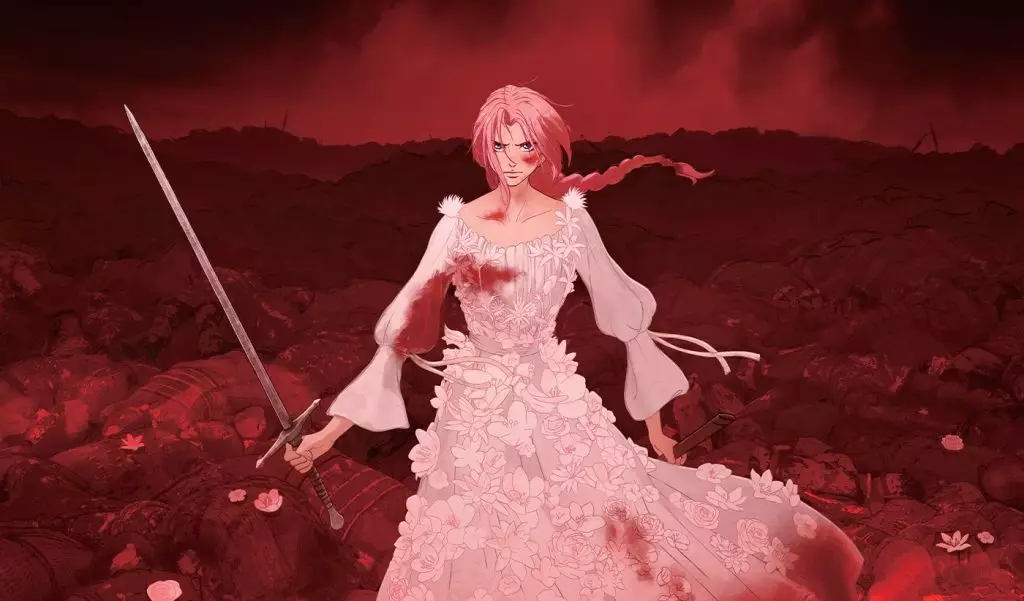As we step into an era where animated films increasingly capture the global audience’s imagination, Sony’s co-production of “Scarlet,” directed by the visionary Mamoru Hosoda, marks a pivotal moment. Set for release on December 12, 2025, alongside titles from industry heavyweights like 20th Century Studios and Focus Features, “Scarlet” tells the tale of a courageous princess navigating the realms of time and space. This narrative, deeply rooted in fantasy, is more than just a whimsical adventure; it represents the innovative spirit that has long defined the anime genre.
While some industry critics might say that such narratives have become formulaic, I would argue that they carry an essential core of truth about humanity—our quest for freedom, our struggles against the confines of reality, and our aspiration for heroism. In Hosoda’s work, the princess can serve as an archetype for strength and resilience, qualities that resonate deeply in these turbulent times.
Understanding the Financial Implications
Sony’s strategy to co-finance “Scarlet” with Studio Chizu and Nippon TV is not merely a business decision; it illustrates a robust optimism for the global market’s appetite for sophisticated, emotionally potent animation. The backing from such established studios suggests that they recognize a promising trend—audiences are increasingly open to international content that provides more than just surface-level entertainment. The previous success of Hosoda’s “Mirai,” which earned an Oscar nomination, proves that quality storytelling can transcend geographical boundaries.
In an era where blockbusters seem to dominate cinematic conversations, the financial relationship between these companies is a testament to their commitment to elevating anime as a serious contender on the world stage. It remains essential, however, for the creators to balance commercial success with artistic integrity. If they fail to innovate further, they risk stagnation in a competitive market.
The Influence of Miyazaki on Contemporary Anime
It’s impossible to discuss “Scarlet” without mentioning the towering legacy of Hayao Miyazaki. With “The Boy and the Heron” opening earlier in December 2023 and making a significant impact at the box office, Miyazaki’s works continue to set a high bar for animation. Many may argue that his influence can serve as a double-edged sword—inviting both admiration and pressure on emerging artists like Hosoda to meet or exceed these expectations.
The way Miyazaki narratively weaves complex themes into fantastical plots offers a blueprint. Such rich storytelling techniques could help “Scarlet” attract a demographic far beyond its target audience. A film that marries adventure with deeper philosophical inquiries about time and existence has the potential to drive more meaningful engagements in the realm of production values.
The Role of Co-Productions in Globalization
Co-productions like “Scarlet” facilitate a melting pot of ideas, cultures, and artistic approaches. In an increasingly globalized world, these collaborations can bring richly diverse perspectives and connect narratives to audiences across cultural divides. This is a necessary evolution for industries that often fall prey to insular storytelling.
While some purists might argue that the original essence of anime can be overshadowed by international partnerships, I believe that it is an opportunity for growth. “Scarlet” is not just a product of Japanese artistry; it represents a collective investment in a shared cultural narrative that can enrich societies worldwide. The shift towards international collaboration speaks volumes about the future of anime—an industry that is relentlessly pushing boundaries and adapting to a changing global landscape.
In the end, whether “Scarlet” will succeed as a cultural touchstone remains to be seen. What is undeniably promising, however, is the willingness of giants like Sony to engage deeply and meaningfully with new narratives.

